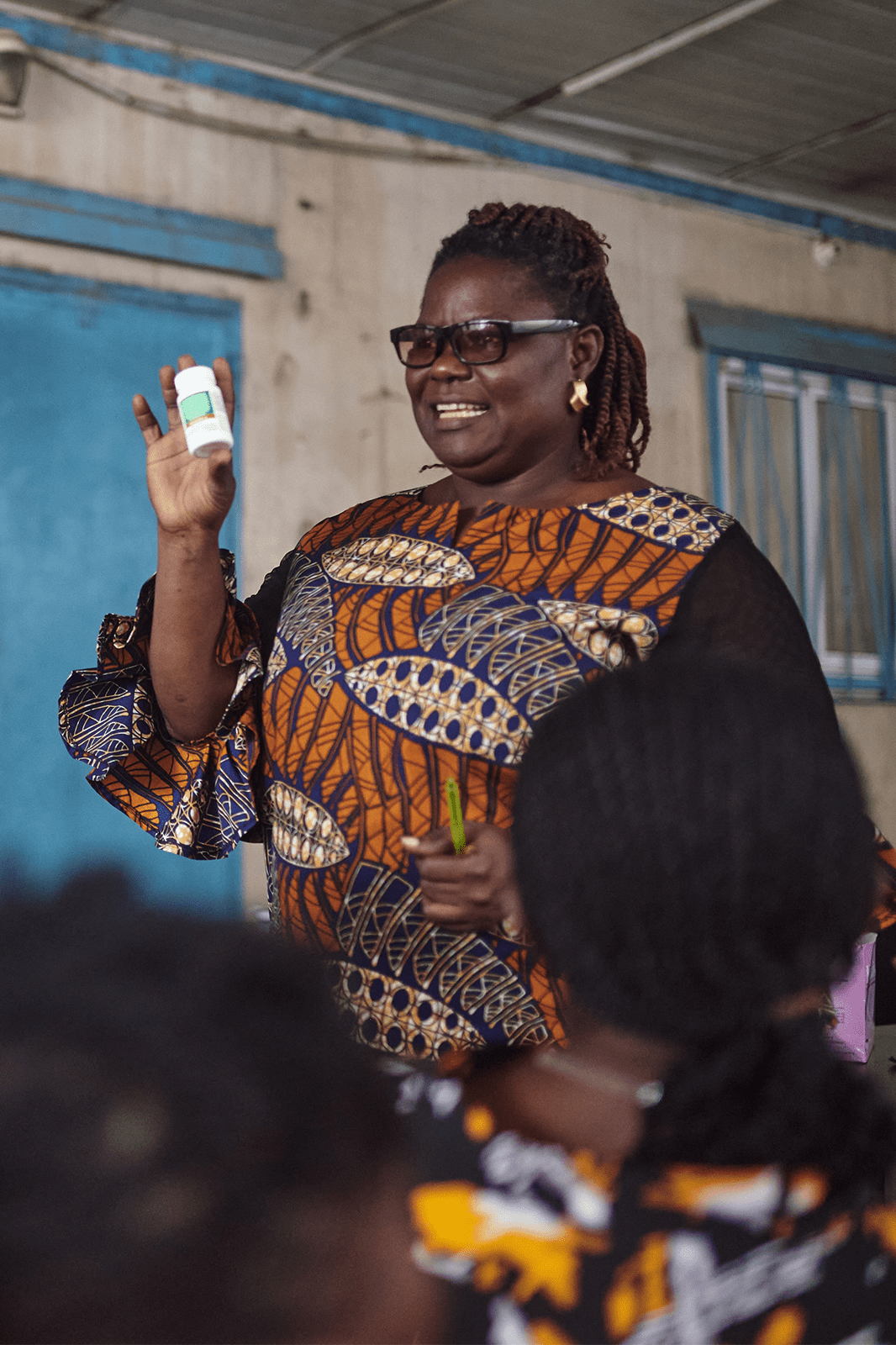Nigeria
With the third-highest number of children living with HIV worldwide, ending AIDS in children by 2030 is a key priority for the West African country.
Background
Nigeria has the second-highest vertical transmission rate and ranks third in the pediatric HIV burden globally. With a population of over 220 million, an estimated 22,000 new HIV infections were reported among children in 2023. Nigeria operates a decentralized health system divided across federal, state, and local governments. The National AIDS and STIs Control Program (NASCP), under the Federal Ministry of Health, leads vertical transmission prevention (VTP) coordination efforts, working closely with implementing partners, development agencies, and community networks. Nigeria joined the Global Alliance, strengthening its commitment and efforts to end pediatric HIV by 2030.
Nigeria’s national plan prioritizes:
-
- The integration of HIV testing into antenatal care (ANC) services.
- Providing lifelong antiretroviral therapy (ART) for all pregnant and breastfeeding women living with HIV.
- Postnatal prophylaxis and early infant diagnosis for infants with perinatal exposure to HIV.
Progress toward elimination targets, 2024
| Elimination of vertical transmission | |
|---|---|
| Pregnant women who received ART for VTP (#) | 31,095 |
| Pregnant women needing ART for VTP (#) | 94,000 |
| Coverage of pregnant women who receive ART for VTP (%) | 33 |
| Early infant diagnosis < 2 months of age (%) | 18 |
| New HIV infection among children (#) | 22,000 |
| New HIV infections averted due to VTP interventions | 8,200 |
| Final vertical transmission rate including during breastfeeding (%) | 23.4 |
| Number of HIV-exposed children who are uninfected | 1,000,000 |
| Source: UNAIDS country fact sheet 2023 | |
HIVE Engagement
Nigeria joined HIVE in August 2024, following an ICAP-HIVE technical team baseline visit, which included meetings with the Ministry of Health, UN agencies, PEPFAR agencies, and implementing partners. Following this, Nigeria nominated its VTP lead in the NASCP to spearhead Nigeria’s engagement with HIVE. Since then, Nigeria has been actively engaged in HIVE learning network activities and has participated in piloting the HIV Vertical Transmission Elimination Capability Maturity Model (VTE CMM).
In December 2024, along with the other five countries in the HIVE network, Nigeria conducted a self-assessment of its VTP program using the VTE CMM. The results showed Nigeria’s strengths and gaps in:
HIV testing policy at ANC, PrEP for PBFW, differentiated service delivery (DSD) scale up plans for PBFW, coordination of differentiated ART models for PBFW and infants, procurement and stock management of VTP commodities, adherence to EID schedules, elimination of vertical transmission of hepatitis B, and impact. The figures below show assessment results of different VTP domains.

Overview of Nigeria’s 2024 VTP self-assessment results
Service Disruptions and Landscaping Survey
Adjustments to U.S. government foreign assistance to certain HIV programs starting in January 2025 significantly affected Nigeria’s VTP program.
Health care workers supported by PEPFAR projects, such as the Mentor Mothers program, were terminated. Staff shortages also led to increased waiting times in large-volume facilities offering ART services for PBFW and the cessation of community HTS services for PBFW. Some laboratories also closed down, affecting viral load and EID sample processing. Additionally, some states experienced a shortage of HIV/Syphilis Duo test kits, which affected testing services for PBFW.
In response to these service disruptions, the Nigerian government is supporting the continuation of VTP services by absorbing the funding of staff and VTP commodities procurement. It has developed comprehensive emergency and sustainability plans to ensure long-term continuity and resilience of the VTP program.
Alignment with the Global Alliance
As part of its Global Alliance commitments, Nigeria has prioritized scaling up PrEP for PBFW, retesting PBFW, community VTP services, community engagement, and the integration of VTP services within other service areas to ensure HIV program sustainability. HIVE activities are directly aligned with these priorities, providing technical support to accelerate Nigeria’s progress toward the Global Alliance target to end pediatric HIV by 2030.


